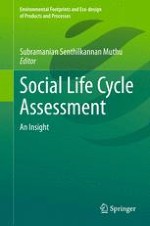2015 | OriginalPaper | Chapter
Social Life Cycle Assessment in a Managerial Perspective: An Integrative Approach for Business Strategy
Authors : G. Arcese, M. C. Lucchetti, O. Martucci
Published in: Social Life Cycle Assessment
Publisher: Springer Singapore
Activate our intelligent search to find suitable subject content or patents.
Select sections of text to find matching patents with Artificial Intelligence. powered by
Select sections of text to find additional relevant content using AI-assisted search. powered by
